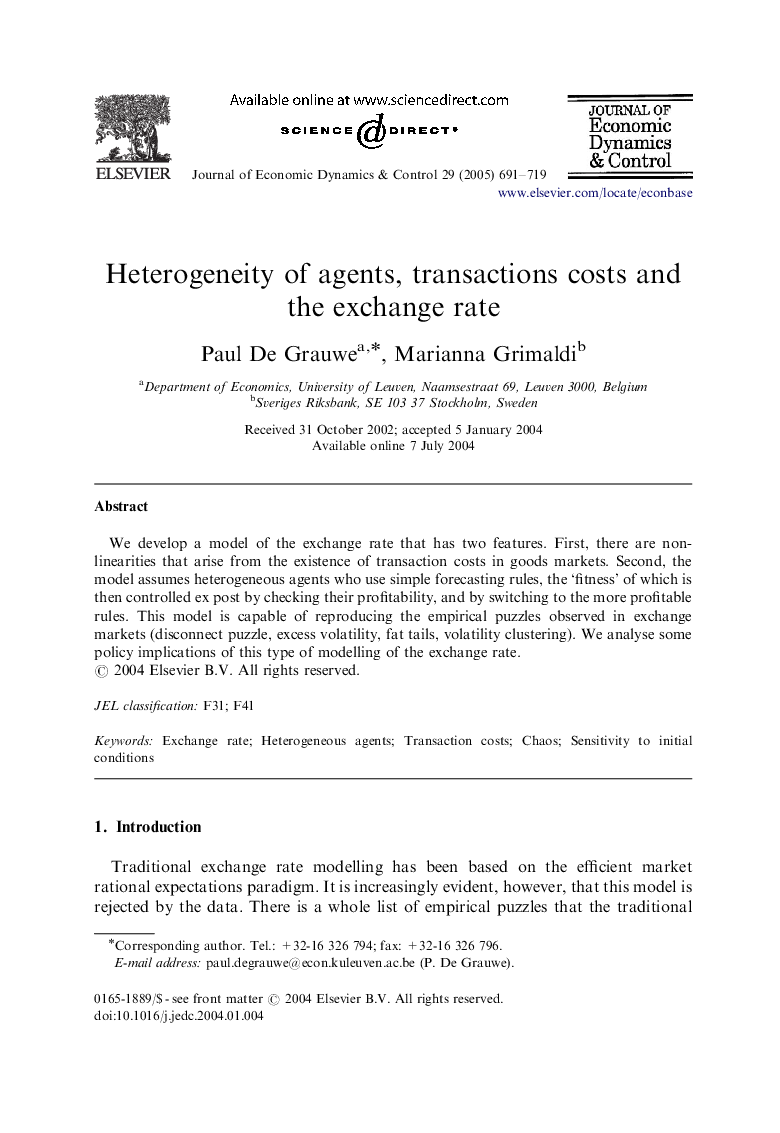| Article ID | Journal | Published Year | Pages | File Type |
|---|---|---|---|---|
| 9555894 | Journal of Economic Dynamics and Control | 2005 | 29 Pages |
Abstract
We develop a model of the exchange rate that has two features. First, there are non-linearities that arise from the existence of transaction costs in goods markets. Second, the model assumes heterogeneous agents who use simple forecasting rules, the 'fitness' of which is then controlled ex post by checking their profitability, and by switching to the more profitable rules. This model is capable of reproducing the empirical puzzles observed in exchange markets (disconnect puzzle, excess volatility, fat tails, volatility clustering). We analyse some policy implications of this type of modelling of the exchange rate.
Keywords
Related Topics
Physical Sciences and Engineering
Mathematics
Control and Optimization
Authors
Paul De Grauwe, Marianna Grimaldi,
